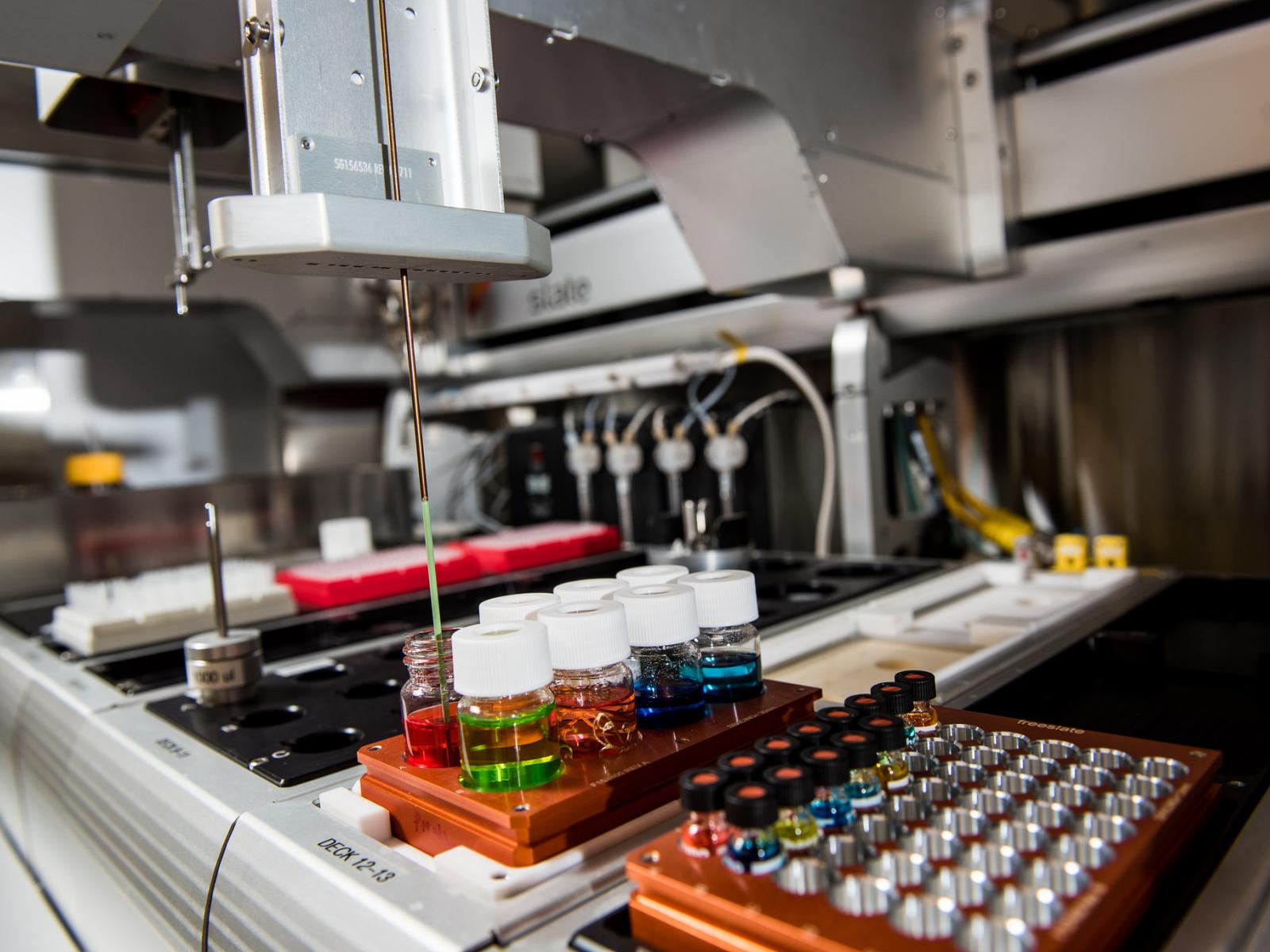High Throughput Center
Robots handle the small stuff for big results
Bioproducts, Sciences, and Engineering Laboratory
Crimson Way
Richland, WA 99354
United States

A catalyst is something that causes a reaction, turning one thing into another. In chemistry, these agents of change can be a gas, a solid, or a liquid—the entire periodic table is up for grabs. To find the best catalyst for a specific application, such as producing hydrogen or biofuel, researchers may screen hundreds of materials under dozens of parameters.
At PNNL’s High Throughput Center (HTC), robots handle routine and repetitive small-scale laboratory tasks to improve the researchers’ labor landscape—and productivity. Key to the HTC is its small-scale capabilities, which allow multiple experiments to run in parallel with robotic support. With robotic capabilities, researchers can perform up to 50 times more experiments than manual methods in practically the same amount of time.
The HTC offers researchers three main features which can reduce costs and increase efficiencies during experiments:
Automated Material Handling. At the HTC, customized robotic systems execute typical laboratory techniques modified for small-scale solid and liquid samples. The systems quickly and accurately perform repetitive physical tasks, such as:
- Placing viscous and slurry samples into small vials
- Capping and uncapping
- Sample filtering and washing
- Heating and stirring
- pH monitoring
- sample dilutions.
Rapid Material Screening. Reactors are where a catalyst can shine, transforming feedstocks into more useful compounds. Multibatch and fixed bed flow reactors expedite small-scale material testing. The reactors are constructed of borosilicate, quartz, Teflon, stainless steel, and Hastelloy. These materials accommodate different types of chemistry without causing catalyst degradation or side reactions. The reactors can operate up to 500°C and 3,000 pounds per square inch, with automated sampling of the flow system and on-line analysis of gas streams.
Advanced Data Analytics and Visualization. Integrated data collection and analysis help scientists discover key links between material structures, experimental parameters, and reaction mechanisms. Data from the various analytical methods are quickly, and often automatically, uploaded to custom project databases. These databases link to data analysis software designed to generate real-time data output with multivariable visualizations. The HTC routinely updates its data handling and software tools to meet changing project demands.
The HTC is especially suited to research areas that require rigorous sampling and experimentation, and those that involve large data sets. In addition to delivering better statistical data, high-throughput techniques can eliminate issues such as sample-size limitations, difficult-to-trace reproducibility errors, and time constraints. The HTC’s highly customizable experiment protocols provide flexibility for different experimental needs, and its dynamic databases instantly record progress while generating visuals to aid in discovery.
The facility is housed inside the Bioproducts Sciences and Engineering Laboratory, located at Washington State University Tri-Cities, just south of the PNNL campus.
For more information about using the HTC for your experiment, email heather.job@pnnl.gov or call her on (509) 375-4529.